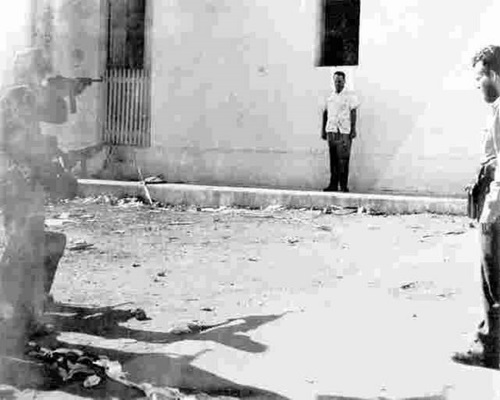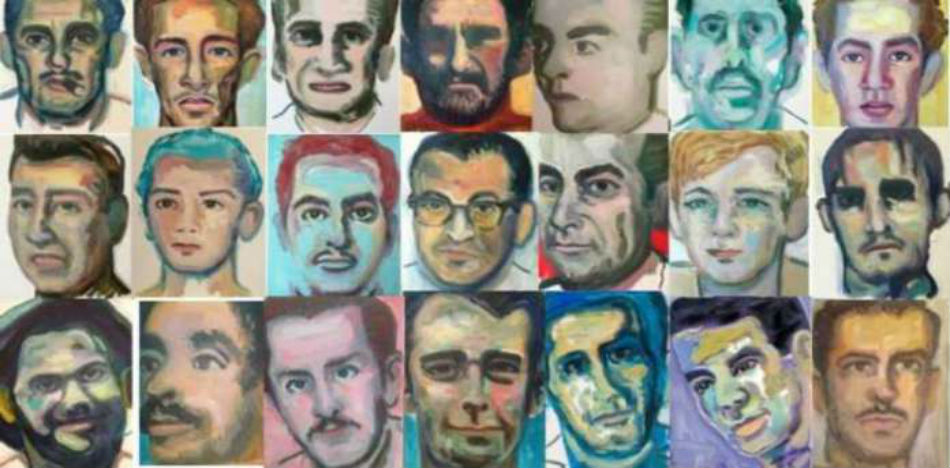
 Cubanet, Tania Diaz castro, 14 February 2017 — Nelson Rodríguez Leiva, 26, was shot in La Fortaleza de la Cabaña in 1971, along with his dearest friend, Angelito de Jesús Rabí, 17.
Cubanet, Tania Diaz castro, 14 February 2017 — Nelson Rodríguez Leiva, 26, was shot in La Fortaleza de la Cabaña in 1971, along with his dearest friend, Angelito de Jesús Rabí, 17.
Also in the same place, but a century earlier, the poet Juan Clemente Zenea was shot.
It did not help Nelson that, in 1960 he had been a teacher in the Literacy Campaign in the mountains of Oriente, or that in 1964 he already had an excellent book of stories published by Virgilio Piñera, in Ediciones R, or that his mother Ada Leiva wrote a letter to Fidel Castro asking for clemency for her son, or that another book of Nelson’s poems was pending publication.
Just a few days ago El Nuevo Herald in Miami published an extensive report about the exposition of the writer Juan Abreu, with one hundred portraits of those executed by the Castro regime, painted by him, and presented at the headquarters of the European Parliament in Brussels, Belgium.
Perhaps Nelson’s face was there.
Abreu received the respect and admiration of former political prisoners such as Pedro Corso, director of the Cuban Institute of Historical Memory Against Totalitarianism, and the poet Angel Cuadra, who said that Abreu’s Exposition “… is like making history talk through the faces, to rescue them and give them new life.” He would have also received the support of the writer Reinaldo Arenas, a dear friend, who lamentably died in New York and who always remembered his friend Nelson.
It’s about, said Abreu, “… not conventional portraits, but an approach to the faces, so often blurred, conserved in old photos.”
Abreu’s project is a history of the Cuban regime, today in the hands of Raul Castro, who wants to erase, above all, those days when this place was used for executions after summary trials, to make examples or simply for revenge or fear of a fierce opposition that arose among all the political opponents condemned to death. Bringing it to the European Parliament must be considered a victory.
The number of five thousand individuals shot dead hangs like a Sword of Damocles over Cuba. The spirit of all these who faced the firing squad hangs over La Cabana Fortress, no matter how many parties are held there, no matter who much fun and excitement and hullabaloo there is, no matter how many books are sold at the book fair that the executioner government hold every year, for a people who are so busy just trying to survive that they don’t have time to read.
In this fortress, with a history as dark as the dictatorship itself, the Book Fair is celebrated, strategic project of Fidel Castro to clean the blood off their graves, cells, bars and walls, as if history could be made to disappear.
The two young writers, Nelson and Angelito, were tied up there, their eyes closed, so as not to see the rifles of the night, close together, as they asked to die.
Not long ago, someone who knew them, told me that Nelson was very romantic, that he wept with the melodies of The Beatles, and even resembled a bit James Dean, the American actor of the fifties and that Angelito, converted Into his noble page, had the face of a child.
Through the sad streets of La Cabaña Fortress, where Nelson and his friend walked towards death, today walk the “grateful” who ignore this story. They are looking for a book to read. Not precisely Nelson’s book of stories, The Gift, or those pages smeared with tears that someone picked up from an empty dungeon.

